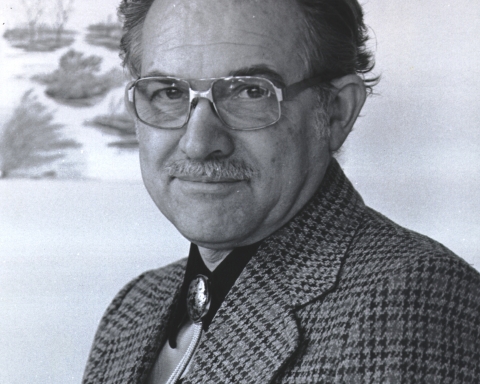Fractures from the distant past.
Windows Through Time
Robert Titus

Joints just below the Bridge
There is a fine outcropping of Devonian age sandstone all along Catskill Creek, both upstream and downstream from the bridge. That, by itself, would make a good story but there is something else. I noticed some prominent, long straight fractures in the rock. These fractures would, of course, take me through another window of time. These are just below the downstream side of the bridge.
Not all rock fractures are as straight and parallel as these, so I became curious. I climbed down to the outcrop and took a measurement of their compass directions (a well-armed geologist always has a compass handy). I was not the least bit surprised with the results. As I expected, I found a bearing of south, 30 degrees west, a nice almost northeast to southwest orientation. That, I knew, is very common pattern to see throughout all of the Hudson Valley and Catskills. It’s what we found in last week’s blog. I had better do some explaining.
There are fractures and then there are fractures. Most are irregular; the rocks break up into more-or-less random and erratic patterns. But, as I had noticed, the ones at the Durham Bridge were altogether different. They were, all three of them, straight as arrows and perfectly parallel to each other. There was a very clear pattern here.
When Nature puts a pattern in front of a scientist she is challenging him to figure it out. Patterns need to be explained. And the best explanations, when we come up with them, are called theories. Geologists, very long ago, came up with good theory to explain what I was seeing beneath the Durham Bridge. These special fractures are called joints. Joints are just what we have seen here; they are straight, parallel fractures of the rock. But how did they form? That’s the theory part.
Joints record chapters in the tectonic history of a region. They began to form when the rocks, long ago, came to be compressed. It may be hard to imagine that rocks can be squeezed, but they can. That requires immense pressures, but such pressures do occur within the Earth’s crust – deep within the crust.
Now the funny thing about all this is that rocks do not fracture when they are compressed; they have enough give to absorb that stress. But compression does not last forever; it eventually does end, rocks expand, and that is when the fracturing begins. There is a sort of relaxation which occurs as the pressure comes off. At that moment we find that rocks are brittle and it is exactly then that they crack to form joints. So, what triggered all this? We need more theory.
Cycles of compression and relaxation, strong enough to deform and then fracture rocks, can only be associated with the truly great tectonic events. These are not just run of the mill earthquakes; these are the towering mountain building events. And the one which triggered our Catskill Creek joints was one of the biggest mountain building events ever; it made the northern Appalachians. These joints record the collision of something you might call Europe with North America.
That resulted in early uplift in the Northern Appalachians of New England. Compression occurred when the collision occurred. Much later in time, Europe split from North America and drifted away. That’s when the relaxation occurred and then the joints formed.
So my bike ride across the Durham Bridge turned into quite the journey into the past. I gazed at those joints and recognized that they were taking back into time. I was looking at fractures that dated hundreds of millions of years into the past. Now I gazed upwards towards the eastern horizon. In my mind’s eye I saw very tall mountains on that horizon. They were white with snow at their peaks. They have a name; they are called the Acadian Mountains. These had started forming nearly 400 million years ago and had largely eroded away by about 300 million years ago. Those joint fractures that had caught my attention have been here for much of that time.
There is nothing unique about the joints at the Durham Bridge. It is quite likely that there are many similar joints near where you live. These are features that people tend not to notice until they develop trained eyes. Well, you have just trained your eyes! Please look carefully at rock outcroppings in your neck of the woods. Look for long straight fractures, often with smooth flat surfaces. These are the joints in your neighborhood. Reach the author at titusr@hartwick.edu





